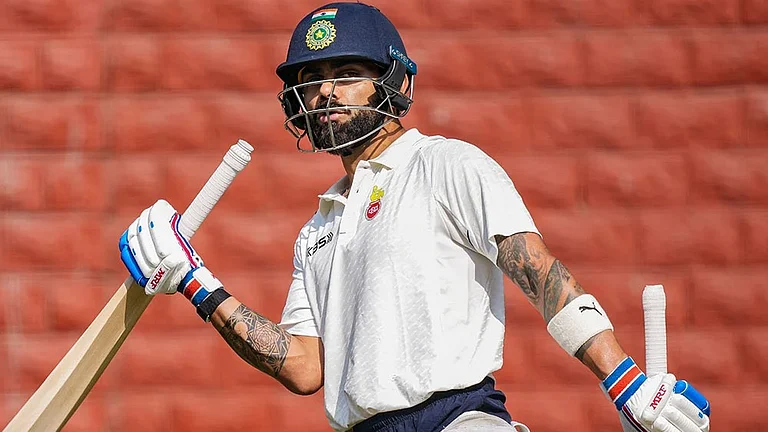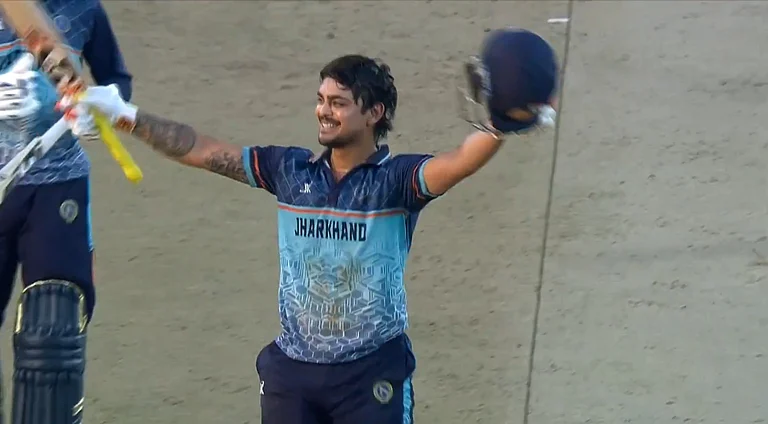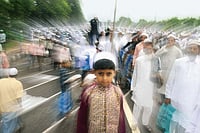IT’S inane to continue to analyse the BJP’s stunning victory rather than rejoice in optimism. A tidy transfer of power to a different party for the eighth time in 67 years of independence is a proud achievement many neighbouring countries would be envious of. Yet, there are rumblings. Not out of grudge, but out of a false sense of deceit—that 31 per cent of the vote sufficed to give the winner a 62 per cent (336 out of 543 seats) majority; that the winner allegedly got a backdoor entry, aided by the first-past-the-post (FPTP) system. It’s possibly worthy to debate the pertinence of the FPTP system but not to cast aspersions on the quality of the BJP’s victory. The FPTP system is a well-honed system that elicited a certain type of behaviour from voters, political parties, candidates and the Election Commission. It will be fallacious to suppose that a different system would have yielded a different result. The FPTP system is perhaps incongruous with India’s plurality of identities. But it’s specious to extend the logic from an incompatible electoral system to denying the BJP its moral victory.
Would a different system have produced different results? Is there a pattern over multiple elections of the current system disproportionately impacting one party? These are interesting questions in the debate on what is the ‘right’ electoral system for India.

Graphic: Rahul Awasthi
There are four broad principles of electoral systems across the world, which have been adopted with modifications by different democracies. In the world’s oldest democracy, the US, the need for a cohesive union of fractious states in the founding days of the republic led to the adoption of a one-size-fits-all methodology: irrespective of size, each state is allotted two seats in the Senate. In most European nations, the need to ensure appropriate representation of the diversity of the region led to the adoption of a proportional representation system. Perhaps it was the need for ease of electoral comprehension for a largely illiterate population that drove India’s founding fathers to adopt the simplistic British FPTP system. To enumerate, the four ideologies are:
Past the half-mark: A winner is declared only if a candidate gets more than 50 per cent of the vote. If that does not happen, there’ll be multiple rounds of election till there’s a winner.
Proportional representation: Seats are allotted in proportion to the votes received by each party. If the BJP wins 30 per cent of the vote in Uttar Pradesh, it would receive 24 seats (30 per cent of the 80 seats in the state).
Winner takes all in a state: The US presidential electoral college system follows this principle. If a particular party wins a majority of votes in a particular state, it takes all seats in that state. So if the BJP wins the most votes in Uttar Pradesh, it will get all 80 seats.
The FPTP system: This is the system India follows, in which a simple majority determines the winner.
An interesting, albeit unscientific, exercise would be to observe how different the 2014 results would have been under each of the four systems, and more importantly, to deduce if there are any trends of the impact of different systems on the main alliances, the Congress-led UPA and the BJP-led NDA. The reason this would be unscientific is because it’s misleadingly simplistic to make the calculations presuming that voter behaviour would not change under different systems. Also, it would be intellectually arrogant to try to mathematically model this change in human behaviour, much to the chagrin of many neo-classical economists. So, with the sole intention to observe any trends over time, this analysis shows how many seats the UPA and the NDA would have won under these four systems in each of the four elections since 1999. Data for all 543 constituencies were analysed and aggregated state-wise to calculate the seats won under the three systems other than FPTP.
The most important observation is that under all systems, in each of the four elections, the victor is the same: NDA in 1999 and 2014, UPA in 2004 and 2009. This lends credence to the notion that the potential flaws of the FPTP are a mere alibi. The other observation is that a majority of the winners in each election secure less than 50 per cent voteshare. But the trend clearly shows that the BJP traditionally wins more seats with more than 50 per cent voteshare than the Congress. On average, the BJP wins 40 per cent of its seats with a clear majority, the Congress 30 per cent. This indicates a higher quality of electoral victory for the BJP. Additionally, regional parties have a far lower winning percentages of seats with greater than 50 per cent voteshare than the national parties. This reinforces the theory that regional parties generally don’t muster a clear majority in their wins.
The most striking difference turns up in the proportional voteshare system. The Congress has a steady sizeable voteshare in most states, which however does not translate into seats in the FPTP system. In the 2014 elections, the proportional system would have given the UPA 130 seats instead of its current tally of 59; and the NDA would have got 210 seats instead of the current 336. Also, the BSP, with no seats now, would have got 23; the SP (five now) would have got 18; the Left (nine now) would have got 16; the YSR Congress (nine now) would have got 12; the AAP (four now) would have got 11; the DMK (nil now) would got nine; and the JD(U) (two now) would have got seven.
This is understandable as the diversity of the nation is manifested through various regional or identity-based parties. It’s also evident that, in a plural society like India, a proportional system will further encourage division of the national vote and spur the rise of regional parties. On average, under the proportional system, the Congress would have won 130 per cent of its actual seats and the BJP 80 per cent. That is, the Congress would have won more seats, the BJP less. The winner-takes-all system throws up no surprises: the winners only consolidate their victory even further. The chart shows how very little separates the two national parties in winnability under the different systems. The only outlier is the UPA potentially garnering more than double its 2014 tally under the proportional system.
Identity plays an inordinately determinant role in most democracies. In democracies where there are identities galore, as in India, parties tend to lean on identity politics even more. In a diverse democracy such as ours, the FPTP system incentivises parties to focus as much (or more) on splitting an opponent’s vote as on getting votes. A proportional system exaggerates this motivation to enable capitalising on identity votebanks. The argument that this system is a truer representation of plurality is perhaps valid. But it carries with it a big risk of divisive politics. Choosing the right electoral system for a country is incredibly complicated. The current system may not be perfect but it’s not evident that the alternatives are obvious choices.
By Praveen Chakravarty with Abhishek Bhattacharya
(The writer is founding trustee of IndiaSpend, India’s first non-profit, data journalism initiative.)

























